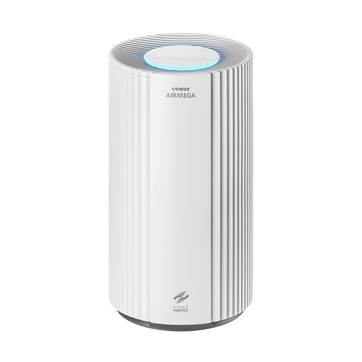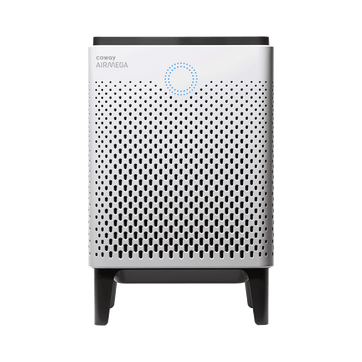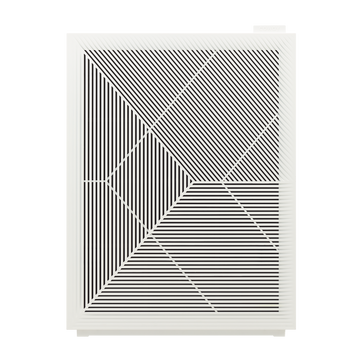
What is a volatile organic compound (VOC)?
“Organic” is a major buzzword for anyone looking to live a healthy lifestyle. Organic products promise to keep us from chemicals, impurities, and other less-appealing ingredients. Add “volatile” to the term, though, and things don’t sound quite as rosy. Volatile organic compounds (or VOCs) are near-ubiquitous in everyday life and are a major contributor to pollution and low air quality. Here’s what you need to know about them:
I’ve heard of organic compounds. What’s different about a volatile organic compound?
An organic compound is any chemical that contains carbon. Our bodies, and all living things, are made up of them; most common sugars, fats, proteins, and alcohols are organic compounds. Volatile organic compounds are a subset of these chemicals that have a tendency of vaporize, or off-gas, at room temperature.
What are some common examples of VOCs?
Chemically speaking, the most-common VOCs people encounter daily are benzene, ethylene glycol, formaldehyde, methylene chloride, tetrachloroethylene, toluene, xylene, and butadiene. These chemicals are present in many household products, including paints, cleaning supplies, wood sealants, air fresheners, pesticides, fuels, cooking gas, and crafting supplies like glue.
Do VOCs cause air pollution?
Yes, but not entirely on their own. Burning fuels — including gas, wood, coal, natural gas, and diesel — releases VOCs into the atmosphere. In sunlight, they combine with nitrogen oxides and react to create ozone at ground level. In combination with particulate matter and other pollutants, that ozone creates smog that reduces visibility and creates health hazards.
Health hazards? What are the biggest concerns there?
Health effects of VOC exposure — through breathing, touching, or swallowing — vary depending on the length of exposure, and the toxicity and concentration of the given chemical. Acute (a.k.a. short-term) exposure can lead to headaches, dizziness, drowsiness, nausea, and eye and throat irritation. The elderly and those with pre-existing conditions, like asthma, might be more prone to reactions. Some studies have linked long-term exposure to cancer, liver, and kidney disease.
So, if many VOC sources are around my house, should I be more worried about them indoors?
Most definitely. According to the EPA (Environmental Protection Agency), indoor VOC concentrations can be up to five times as high as they are outdoors. And, in instances of heavy chemical activity, such as stripping paint, concentrations can spike to 1,000-times outdoor levels.
Is there a threshold for when VOC concentrations go from safe to unsafe?
There is no federally-adopted limit for VOC exposure in homes, but many agencies do make recommendations for individual compounds — specifically ones that are known to have substantial health or carcinogenic effects. World Health Organization research, for instance, indicates that formaldehyde exposure for 30 minutes at a concentration of 81 parts-per-billion (ppb) will cause sensory irritations; up concentration to 100 ppb and lengthen exposure, and the risk of nasal cancer rises.
What can I do to minimize my exposure?
VOCs are so common in our paint and furnishings, that ridding your home of them entirely isn’t exactly realistic. But there are things you can to zap many chemicals from the air. For starters, consider switching to natural cleaning products or use plain baking soda and vinegar in their place. When cooking, painting, or cleaning, ventilate your home by opening windows and keeping fans running. At the same time, a HEPA air filter with an activated-carbon layer can trap up to 99 percent of what doesn’t get carried off in the breeze.
Disclaimers
1Coway air purifiers has been proven to trap dust, pollen, dander, viruses and bacteria in the air based on KCL (Korea Conformity Laboratories) testing.They have been tested in a 30㎥ size chamber according to the Korea Air Cleaning Association standard (SPS-KACA 002-132:2022 Modified) to measure the 0.01㎛ size of particle removal rate. It was tested on maximum airflow speed in normal room temperature and humidity conditions. The performance may vary in the actual living environment of customers.
→ Tested with Airmega Aim, 150, 160, AP-1216L, AP-1512HH, AP-1512HHS, 200M, Icon, IconS, 230, 240, 250, 250 Art, 250S, 300, 300S, 400, 400S, ProX
299.97% of viruses, bacteria, fungi and pollen were verified to be removed from the air for Coway air purifiers which have Green True HEPA™ filter applied based on the Japan Food Research Laboratories(JFRL) testing according to JEM 1467 standard.
→ Tested with Coway Airmega AP-1512HH, AP-1512HHS, 250, 250 Art, 250S, 300, 300S, 400, 400S
→ All tested by JFRL and received above result within below time.
All tested by JFRL and received above result within below time.
- Virus: Tested with Escherichia coli phage ΦX174 NBRC 103405, 60 minutes
- Bacteria: Tested with Staphylococcus epidermidis NBRC 12993, 60 minutes
- Fungi/Mold: Tested with Penicillium citrinum NBRC 6352, 60 minutes
- Pollen: Tested with Cedar Pollen extract, 60 minutes
3Aerosol test conducted in a Biosafety level 3 laboratory with two Coway air purifier models, Coway Airmega 250 and 400 for removal of SARS-CoV-2 Aerosol by US based MRI Global, a not-for-profit laboratory and partner of US Department of Defense. The test was conducted in a 13.1ft3 chamber. Virus was aerosolized for 15 minutes and the product was turned on high for 2 minutes. Result showed each product effectively removed over 99.98% of the SARS-CoV-2 in 2 minutes. This is a result from a laboratory experiment condition and result may vary in different conditions. This result does not imply it kills SARS-CoV-2 or prevents the transmission of Covid-19. Coway Airmega 250S and 400S are identical to the tested models and has equal performance with an additional mobile connectivity function.
4The concentration of ammonia, acetaldehyde and acetic acid were proven to be removed within 30 minutes by FCG Research Institute, Inc. Human Life Science Lab. It is not a demonstration result in the actual use space. Not all odors and gases may be supported. → Tested with Coway Airmega 150, 160, AP-1512HH, AP-1512HHS, 400, 400S
5The coverage area of the air purifier is based on an area where the air cleaner can make two air changes per hour (ACPH). An air change per hour translates to how many times an air purifier can clean an area, assuming the height of a ceiling to be 8 ft, in one hour. Therefore ** means two air changes per hour means that the cleaner can clean the area once every 30 minutes and * means air changes per hour means that the air purifier can clean the area once every 60 minutes.
10Terms and conditions apply. Discounts, including promotions, coupons, bundle discount and subscription discount, cannot be stacked on top of other coupons. During promotional periods, discount codes will not be able to be applied to orders. Promo codes may apply to products only—filters, accessories, and new products within 3 months of the release date are not included.




















